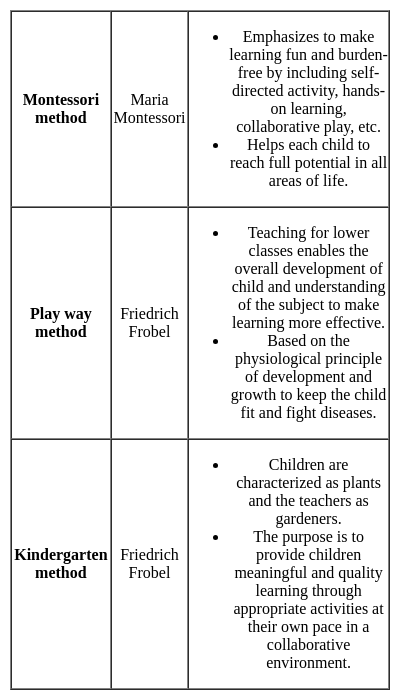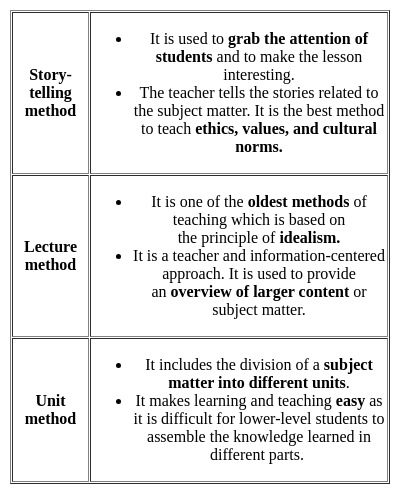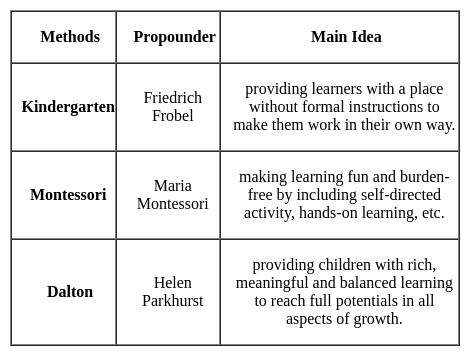Software Development Exam > Software Development Tests > Test: Teaching Practices (Teaching Methods) - Software Development MCQ
Test: Teaching Practices (Teaching Methods) - Software Development MCQ
Test Description
10 Questions MCQ Test - Test: Teaching Practices (Teaching Methods)
Test: Teaching Practices (Teaching Methods) for Software Development 2025 is part of Software Development preparation. The Test: Teaching Practices (Teaching Methods) questions and answers have been prepared
according to the Software Development exam syllabus.The Test: Teaching Practices (Teaching Methods) MCQs are made for Software Development 2025 Exam.
Find important definitions, questions, notes, meanings, examples, exercises, MCQs and online tests for Test: Teaching Practices (Teaching Methods) below.
Solutions of Test: Teaching Practices (Teaching Methods) questions in English are available as part of our course for Software Development & Test: Teaching Practices (Teaching Methods) solutions in
Hindi for Software Development course.
Download more important topics, notes, lectures and mock test series for Software Development Exam by signing up for free. Attempt Test: Teaching Practices (Teaching Methods) | 10 questions in 12 minutes | Mock test for Software Development preparation | Free important questions MCQ to study for Software Development Exam | Download free PDF with solutions
Test: Teaching Practices (Teaching Methods) - Question 1
A good teaching method for infancy stage is
Detailed Solution for Test: Teaching Practices (Teaching Methods) - Question 1
Test: Teaching Practices (Teaching Methods) - Question 2
Which of the following is the most modern teaching method?
Detailed Solution for Test: Teaching Practices (Teaching Methods) - Question 2
Test: Teaching Practices (Teaching Methods) - Question 3
Find the correct sequence of Project method:
Detailed Solution for Test: Teaching Practices (Teaching Methods) - Question 3
Test: Teaching Practices (Teaching Methods) - Question 4
Suresh, a student of class VI, learns by doing and finds it difficult to follow when the teacher is only explaining. What teaching-learning strategy the teacher has to use in her mixed class?
Detailed Solution for Test: Teaching Practices (Teaching Methods) - Question 4
Test: Teaching Practices (Teaching Methods) - Question 5
What does the Play Way method develop in students?
Detailed Solution for Test: Teaching Practices (Teaching Methods) - Question 5
Test: Teaching Practices (Teaching Methods) - Question 6
Which is not true of heuristic teaching method?
Detailed Solution for Test: Teaching Practices (Teaching Methods) - Question 6
Test: Teaching Practices (Teaching Methods) - Question 7
All the teaching methods of modern Kindergarten, Montessori, Dalton project methods:
Detailed Solution for Test: Teaching Practices (Teaching Methods) - Question 7
Test: Teaching Practices (Teaching Methods) - Question 8
Project method is based on the principle of _____________.
Detailed Solution for Test: Teaching Practices (Teaching Methods) - Question 8
Test: Teaching Practices (Teaching Methods) - Question 9
Teaching methods like discovery method and activity method develops:
Detailed Solution for Test: Teaching Practices (Teaching Methods) - Question 9
Test: Teaching Practices (Teaching Methods) - Question 10
Which of these teaching methods is considered traditional?
Detailed Solution for Test: Teaching Practices (Teaching Methods) - Question 10
Information about Test: Teaching Practices (Teaching Methods) Page
In this test you can find the Exam questions for Test: Teaching Practices (Teaching Methods) solved & explained in the simplest way possible.
Besides giving Questions and answers for Test: Teaching Practices (Teaching Methods), EduRev gives you an ample number of Online tests for practice
Download as PDF





















